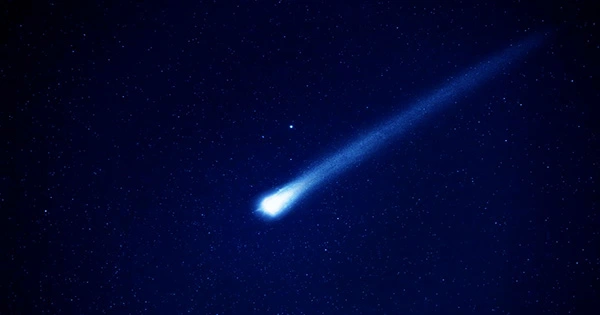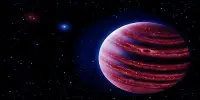The initial hours following a fireball sighting are similar to a detective case. People around Melbourne took to social media last night at about midnight to claim sightings of a bright light gently flashing across the sky.
The video clearly shows the fireball breaking apart, with the shards then burning up, indicating that this item was large.
An unexpected piece of space junk
A powerful explosion has been reported across Victoria. Such sounds, known as sonic booms, indicate that the fragments survived long enough to hit the lower atmosphere—otherwise, they wouldn’t be detectable from the ground. As a result, we can conclude that at least a portion of this fireball was dense.
In addition, the illumination of the fireball exhibited distinct colors, particularly orange, in certain videos. This indicates that the object is not a space rock, but rather man-made, with a considerable number of plastics or metals burning up (known to anyone who has burned materials in the Bunsen burner in high school chemistry class).

So it’s conceivable that we just saw several tons of space junk—anything humans have thrown into orbit that is no longer under our control—re-enter Earth’s atmosphere. On the global space debris tracking site SatView, however, no reentry was projected.
The fireball may have been the third stage of a Soyuz 2 rocket carrying the navigation satellite GLONASS-K2, according to a preliminary analysis by US-based astronomer Jonathan McDowell. Roscosmos (Russia’s space agency) launched it on August 7 from the Plesetsk Cosmodrome, some 800 kilometers north of Moscow.
The fireball’s extreme brilliance is due to the remarkable speed with which debris re-enters Earth’s thin upper atmosphere, 25,000 kilometers per hour or more.
When you rub your hands together, the friction between them warms them. If you do that a thousand times faster, you can envision them glowing white hot from the heat. At a height of 100 kilometers, the friction between the metal of the space debris and the Earth’s thin atmosphere can produce a tremendously intense glow.
You can help astronomers with the details
We need witnesses to download the Fireballs in the Sky App and reproduce the passage of that trail as best they can to help us confirm what the Fireball was and where it came from.
We can triangulate the trajectory and identify where any remaining parts may have landed and attempt to gather them based on all of those sightings. So far, reports have been contradictory, and further information is required. It appears to have entered the atmosphere from the northwest, traveling over Victoria to Tasmania in the southeast, but its precise path is unknown.
The majority of space trash never makes it to Earth. Almost all such fragments are destroyed by the enormous heat of 5,000 Kelvin or higher created by re-entry.
Some tougher engine blocks, on the other hand, can make it to the ground, which is why alerts about space trash re-entering the atmosphere are transmitted to airplanes in particular.
However, because space debris travels so quickly, even a minor error in the re-entry computation can cause it to appear hundreds of kilometers away. For the most part, such cautions are not as useful as they could be.
To improve our projections, we need stronger ground tracking stations and breakthroughs in modeling the interaction between space trash and the upper atmosphere.
Fortunately, structures, let alone humans, are small targets in comparison to the vast uninhabited stretches of land and sea. While there have been reported impacts, these are thankfully extremely infrequent, making space trash a non-threatening threat to us on Earth.
As scientists race to figure out the intricacies of this gorgeous flare, it also serves as a spectacular kickoff to Australia’s National Science Week, which features thousands of live talks communicating science to as many people as possible.
















